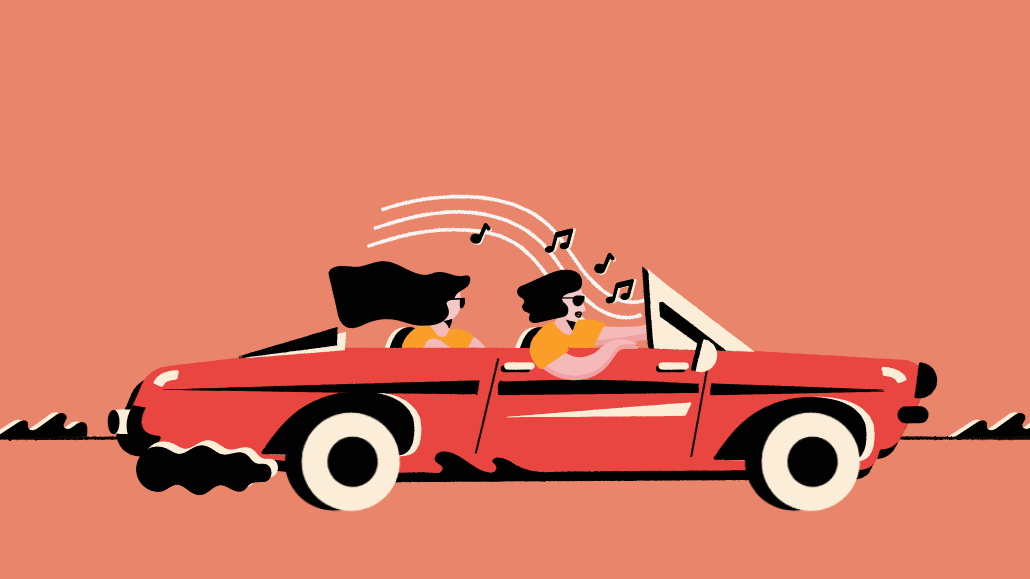‘No one even notices a banner ad anymore’: Marketers see post-pandemic value in out-of-home advertising

The conversation around the need for ad buying diversification hasn’t shown signs of slowing down any time soon. And as marketers continue to look for ways to vary their ad spend, out-of-home is emerging as a promising channel.
Over the last few months, startup brands like Andie swimwear, JUDY emergency kits, dining app Seated and virtual healthcare app K Health have all launched out-of-home campaigns in cities like New York City, Los Angeles, Atlanta, Dallas and Orlando. And for many, it’s their first. Meanwhile, brands like telehealth company Ro have started reinvesting in subway ads. Oral health brand Quip too is returning to OOH, partnering with LinkNYC digital billboards in late August to launch its first OOH campaign since the pandemic, said Quip’s vice president of growth, Shane Pittson.
Even as new Covid variants threaten a return to mask mandates and potential lockdown, advertisers say out-of-home has proven too promising a marketing channel to press pause.
“As people are rediscovering their same surroundings in new ways, with less crowded transit, outdoor dining and outdoor entertainment we would expect brands to start returning to the same formats in new ways,” Pittson said of OOH efforts.
By the end of the year, the Out of Home Advertising Association of America predicts OOH will see 10-12% revenue growth, a steady recovery after the U.S. OOH market fell by $1.3 billion in total ad revenues in 2020. It was a significant drop from $8 billion in 2019 to $6.7 billion in 2020, a 16% decline, per the OAAA’s research.
This time last year, OOH made up less than 5% of R/GA’s client media planning — and that’s if it was included at all. But since May, the trend has reversed with OOH returning to pre-pandemic levels, eating up anywhere from 20-30% of client media planning, according to Ellie Bamford, senior vice president and global head of media and connections at R/GA, who did not provide exact figures. R/GA has served clients like Uber and Ally Bank.
“There’s something very powerful about showing up in people’s everyday moments in their life,” Bamford said of OOH ads. “We’ve all grown sick of the social bombardment and no one even notices a banner ad anymore. We’ve moved past it.”
Ad position: web_incontent_pos1
However, digital media’s oversaturation and pay-to-play nature is just one piece of the puzzle that’s sending marketers scrambling to find alternative marketing solutions — especially as iOS updates, like tracking notifications and user opt-out options, have left a shrunken data pool for advertisers and attribution.
“Basically, the punchline with iOS is it’s becoming harder and harder to reach your target audience through digital ads,” said Melanie Travis, CEO and founder of Andie swimwear, which recently launched landed its first billboard in Beverly Hills. “So a brand trying to navigate the waters needs to start diversifying more, faster than ever before.”
The pandemic has also pushed more marketers to OOH. Lockdown cut travel and traffic off at the knees, making for significantly discounted OOH ad rates that many startups sought to take advantage of as vaccine rollout promised a soon return to normal life, as previously reported by Digiday.
Technological advancements in digital billboards have also improved OOH, making the channel even more promising as measurable, cost-effective, flexible and brand safe.
For these reasons, startup emergency kit brand Judy, will continue OOH efforts with 7% of its total marketing spend, per Judy co-founder Simon Huck, who did not provide exact figures. After a micro-campaign with a single billboard in Dallas, Judy recently launched a multi-city campaign with billboards across Los Angeles, Austin and Miami.
Ad position: web_incontent_pos2
It’s a similar story for dining app Seated, which recently launched a major campaign with billboards, spots on transit, wallscapes and murals throughout New York, Atlanta, Dallas, and Boston. Doubling down on its commitment to OOH, the budget for this campaign is three times what it was for previous campaigns, taking up 60% of monthly ad spend, up from 25%, per Bo Peabody, co-founder and executive chairman, who did not share exact budget figures.
Over at Andie, CEO Travis said the brand will keep up with OOH in its media mix as digital OOH continues to make strides in attribution and measurement capabilities.
“Anecdotally, I think it’s doing really well. But I think it’s up for a month and I want to see what impact it has,” she said. “What are all the different ways you can quantify the success of out-of-home?”
More in Marketing

In the marketing world, anime is following in the footsteps of gaming
As marketers look to take advantage of anime’s entry into the zeitgeist, they might be wise to observe the parallels between the evolution of anime as a marketing channel and the ways brands have learned to better leverage gaming in recent years.

With the introduction of video ads and e-commerce, Roblox looks to attain platform status
Roblox is expanding into more areas than just ads in 2024. Much like platforms such as Amazon and Facebook have transcended their origins to evolve from their origins as online marketplaces and social media channels, Roblox is in the midst of a transformation into a platform for all elements of users’ virtual lives.

PepsiCo wants to remain a ‘driver of culture’ as it turns to influencers and activations amid rebrand
The soda-maker says it can translate cultural relevance into sales volume.
Ad position: web_bfu



